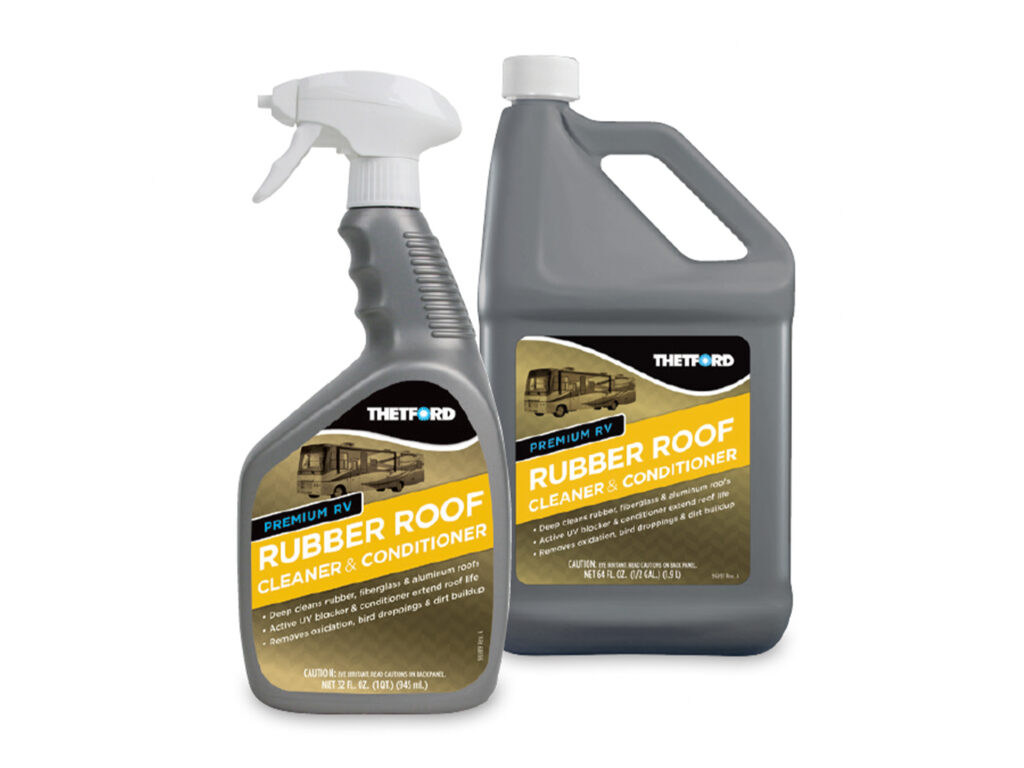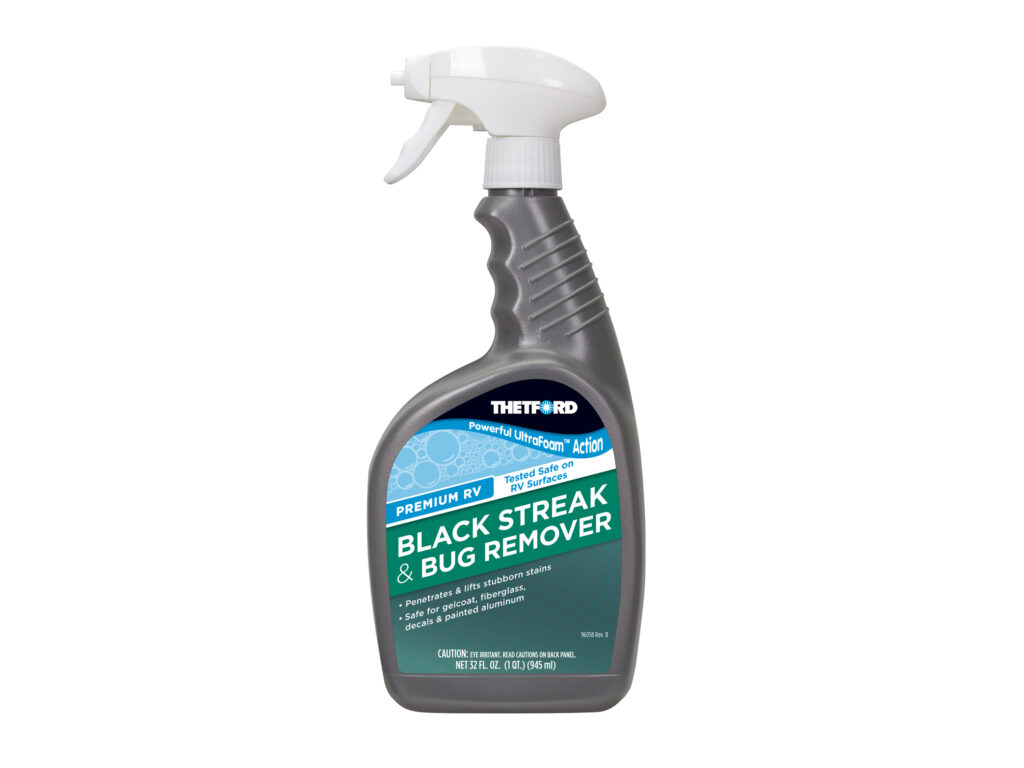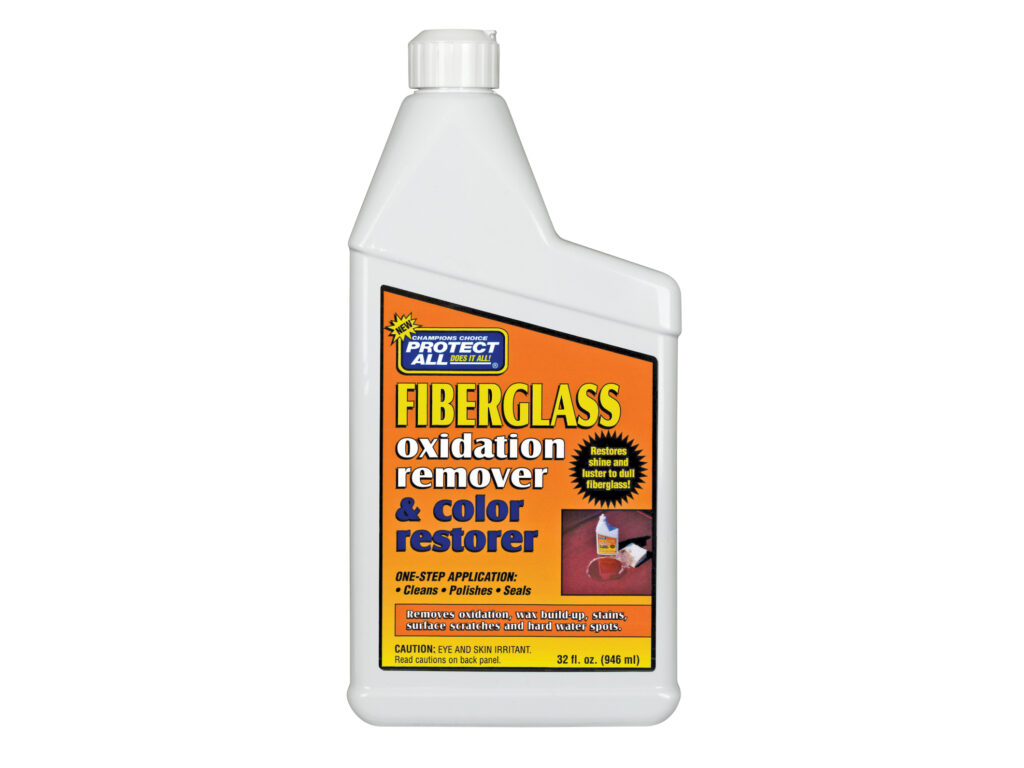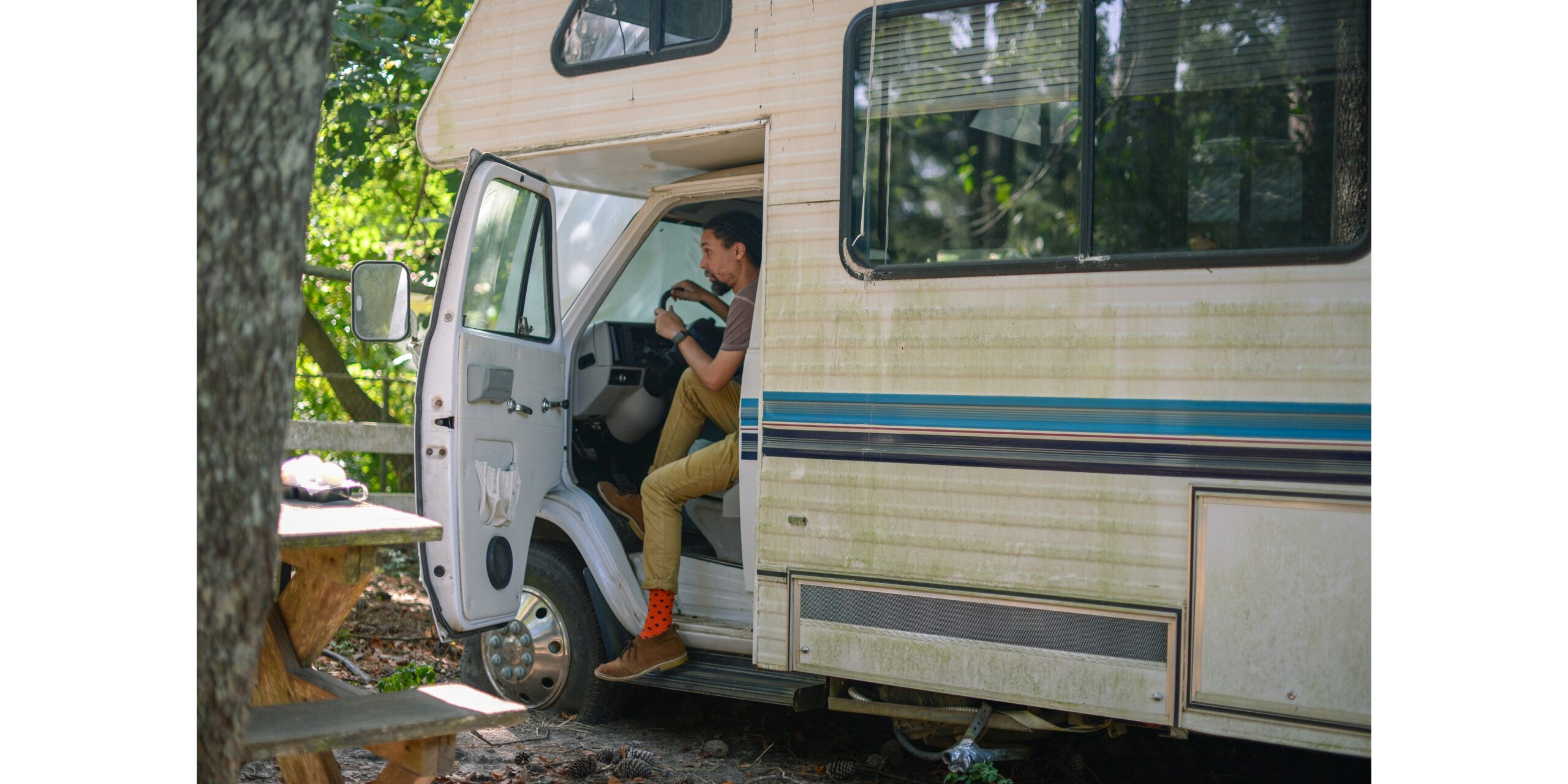You don’t have to be a motorhome or boat owner to know what a black streak is, because you can expect to see them on any vertical surface. In this article we’ll talk about why streaking occurs, how to clean them, and how to treat the surfaces to keep them cleaner for longer.
Who gets black streaks?
Anyone owning a vertical surface left in the open environment is susceptible to acquiring black streaks. Though they may not be prevalent on new surfaces, most smooth and semi-smooth vertical surfaces will get them. It is simply a matter of TIME. Yes, that’s right — TIME. Streaks occur because of time and neglect.
The reality is that black streaks occur primarily because of moisture. So, if you are in a moist environment, you are more likely to have black streaks than if you’d be living in a dry climate. Now this does not mean actual precipitation, but moisture in the air. If you are in an area with evening dew, then you should expect streaks.
Black streaks are also prevalent in areas with high air pollution. So, if you live in a city with high population content you will be more likely to have streaks than folks living in the country. That is not to say that folks living in the country will not get streaks. If moisture content is high and the air has plenty of dust from either unpaved roads or trees, then you should expect streaks.
To summarize, if you live in a dry climate with little to no air pollution or dust and you live away from paved or unpaved roads with traffic or dust, then it is safe to say that you will see far fewer black streaks than those folks living elsewhere, but it doesn’t mean you won’t get them.
What makes a black streak?
The accumulation of surface contaminants, moisture, and failure to clean or protect the surfaces are the perfect formula for a successful black streak. There are millions of different particulates, matter, floating in the air. Many times, we call these, pollutants. However, some of these items are naturally occurring and therefore cannot be referred to as pollutants. These include, but are not limited to; water, dust, plant spores and pollen just to name a few simple ones.
The mixture of airborne particulate, we will call it dust, settles to a horizontal surface during the day. Then in the evening hours, after the sun goes down, moisture, normally occurring as dew, collects over the film of dust. At this point the process of gravity takes over. The water and dust mixture gains mass as the water collects. The mixture then takes the path of least resistance to reach the ground. Some of the mixture is left behind on the vertical surface. Mixed with the dust are remnants of the water. Calcium, lime and other minerals in the water and air are also deposited to the surface.
In the early morning hours, the sun causes the water in the mixture to evaporate ending the process and leaving behind the finished black streak. Each evening the process repeats and takes the path of least resistance using the path of many Black streaks before. The layered build up is slow and takes time under the cloak of darkness.
When would you expect a black streak?
As stated previously, black streaks start developing in the early evening hours. As long as there is moisture and dust, they will keep developing. So, keep in mind that they are regular when moisture and dust are present and less sever when they are not.
Expect black streaks to become noticeable in one to three weeks under normal conditions. Expect them to be glaring in one to three months. Also understand that the process repeats every night. As time passes the dust and water mixture build up, and the black streak gets a better hold. This physical hold is especially good on an un-waxed or neglected, oxidized surface.
How do we combat black streaks?
Knowing what we now know, some simple thoughts come to mind. Prevention is a good place to begin. One way to help prevent streaks is to catch them before they happen using gutters. Yes, RV and some marine applications can benefit from using simple plastic gutters attached to the top of a vertical surface. You will need to remember that even these gutters need to be cleaned from time to time.
Alternatively, though far more costly, is a garage. While many people do not have the room, either on their property or in their wallets, for a garage, it too works to minimize black streaks. Keep in mind that all the above do not prevent, they only serve to minimize the occurrence.
So now you have taken steps toward prevention. In addition, some simple tasks can also go a very long way toward continuing your efforts to beat black streaks. Since we know that dust and dew settle on horizontal surfaces we can attend to them regularly. A simple sweep of the roof monthly will help loads. Now that does not mean get up on the roof and sweep it off. That means, wait for the area to be completely dry and use a soft bristle broom and dustpan to collect the accumulation. Doing so will help prevent moving the dust and dirt from the roof to the side of the vehicle.
Consider waxing this horizontal surface if it is fiberglass or painted aluminum with a product like Thetford®, RV Wax. Consider a treatment that leaves a dry waxed finish, such as Thetford® Rubber Roof Cleaner and Conditioner, if the roofing is rubber or vinyl. This step will minimize the way dust sticks to the surface making your monthly sweeping easy.

Rubber Roof Cleaner & Conditioner
Petroleum-free formula designed for EPDM rubber roofs
SKU: 32512; 96016
Cleaner and conditioner, petroleum-free, formulated specifically for EPDM rubber roofs, fiberglass, and aluminum surfaces. Removes oxidation and tree sap without damaging the surfaces.
Washing your vehicle every 3 months and a good regular wax job helps to prevent black streaks in the first place. Waxing creates a physical barrier across the surface that helps the surface shed the water and dust mixture.
Once you have a good wax on the surface, check periodically for new streaks. If a reapplication of wax to the affected are does not do the trick, then it is time for a more specialized cleaning solution, such as Thetford®UltraFoam Black Streak Cleaner & Bug Remover.
The specialized cleaner is your last resort. These are very strong cleaners even though many find some that do not work completely. The best way to use a black streak cleaner is to spray the product onto a towel and attack the streak directly. This simple action of applying physical contact to the surface along with the cleaner is far better than spraying the solution and rinsing.

UltraFoam® Black Streak & Bug Remover
Black streak, bugs, and tough stains cleaner, safe on car paint and fiberglass
SKU: 32816
Safe on gel-coats, fiberglass, and painted aluminum, the foaming cleaner works on cars, RVs, motorcycles, trucks, and boats to remove black streaks, bugs, and other tough stains.
It is also important to understand that these cleaners WILL strip wax from the surface. So, it is important to re-wax the area where you have used the cleaner.
If after cleaning the surfaces you’re still seeing the black streaks, it means that the surfaces have been oxidized and you will need to treat these areas as you would any oxidized surface.
Before proceeding, make sure to choose the product that is correct for your surface and read and follow the directions. Once the surface has been deoxidized re-wax for protection.
Some products that address oxidation do so by using one step. Products like Protect All® Fiberglass Oxidation Remover and Color Restorer, remove the oxidation, polish the surface smooth and flat, and then leave behind a wax finish, thereby eliminating the need to re-wax. Be sure to read the label so you get the product that is right for you. A simple coat of wax done once every three months or so will go a long way toward beating black streaks.
Now that you are aware of the, who, what, when, where, why, and how of black streaks you are well prepared to both tackle them and help prevent them. Do keep in mind that nothing will stop them altogether. Only regular and routine maintenance will make them manageable.

Fiberglass Oxidation Remover
2-in-1 formula, removes oxidation and seals surfaces
SKU: 55032
Formulated to restore shine to fiberglass and aluminum, the Fiberglass oxidation remover cleans wax buildup, stains, and surface scratches, while also sealing the surfaces.




